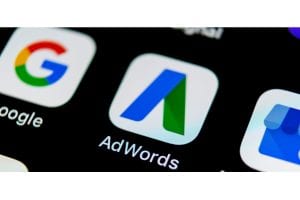
What You Need to Know About the New Google AdWords Update | Simplemachine
Google® is continually tweaking the way its many platforms work. From how the search engine identifies rankings to how YouTube® pays creators, for better or worse, the company is always looking for ways to provide a better result for users and advertisers. So while changes in Google AdWords® should not come as a surprise, it’s important for a business like yours to understand these changes.
The updates to Google AdWords will force your own advertising to shift with it. Simplemachine is here to support you as you navigate these changes and can provide you with an assortment of Google AdWords services so you can focus on other important tasks.
New Names
Google has simplified the name from AdWords to Google Ads. The idea of keywords has been around long enough Google believed it could remove “Words” from the title without any confusion.
Google has also combined several applications to create Google Marketing. While there are a handful of cosmetic changes with Google Marketing, the singular platform brings company heads, media buyers, and creative professionals (such as those producing content on YouTube) together into a singular program. This allows for improved cross-promotion. It also helps connect creators with advertisers in order to directly advertise on select channels.
The Google marketing platform includes Display & Video 360, Analytics 360, Data Studio, Surveys 360, Search Ads 360, Attribution 360, Tag Manager 360, and Optimize 360.
Reliance on Ad Personalization
One of the more recent features Google has utilized over recent years is “advertisement personalization.” It allowed customers to showcase ads to specific demographics, based on previous searches the individuals have performed. As Google can record and monitor search results, YouTube views, Google Map address lookups and kinds of Gmail content read, it made it possible to fine-tune targeted material with Google especially easy. But consumers have started to complain about privacy issues.
Even when ads are crafted specifically for them, many web users have been concerned by the feature and no longer want Google to track what they do online (and provide that information to advertisers). So now, with the latest feature rolled out by Google, it’s possible for users to opt-out of the personalization feature.
This means it does become a bit more difficult for advertisers to connect with a very specific key demographic. However, as a Google user yourself, you may find it beneficial.
More Google Video
With more and more mobile users turning to their phones to watch streaming videos from YouTube and to purchase goods seen on video advertisements, Google is pushing video-based content harder than ever before. With the combination of live streaming services and YouTube, Google brings video-based advertisements into its Marketing Live platform. Within the platform, it uses what it refers to as “TrueView.”
Prior to the change, if a visitor on YouTube watched a video for longer than a few seconds it counted as a “view.” Some advertisements placed on the video would be charged (even if the viewer left the video after five or 10 seconds). Now, a TrueView isn’t checked off until at least a minute of the video has been watched. This way, if you’re advertising on YouTube, you will get a bigger bang for your buck. You’ll know a viewer is watching the content for longer than a few seconds.
Google is pushing more lead ads as another way to monetize video content on YouTube. One of the problems you’ve likely had with YouTube advertisements is it’a difficult to capture lead information from someone who sees the ad. This will no longer be the case. You can now capture contact information when a viewer watches content from a top video producer on the social media/search engine platform.
By capturing lead information from a viewer, you can shift your call to action (CTA). You don’t need to go for the home run and request them to make a purchase right away. Instead, with these Google AdWords changes, you can implement different CTAs, all of which can be better crafted to fit your unique needs.
Varying Headlines and Descriptions
In the past, when you created advertisements to appear in Google Search you would enter a single headline and single description, as well as a handful of keywords for the information. Google has improved this to now include up to 15 headlines and four descriptions in a near total overhaul of the Expanded Text Ad option.
The point of allowing you to enter the varying information is to help Google provide a more suitable text ad to the user, based on an assortment of factors. This way, instead of taking out a dozen different text ads based on varying demographics and analytical information, you are able to implement these changes directly within a single text ad, which now goes by the name of “Responsive Search Ads.”
Need to Boost Landing Pages
As you likely already know, more mobile searches are now performed than traditional desktop searches. Several years ago, Google announced it would improve search results for mobile-specific websites for mobile searches. Additionally, website speed has played an important role in search engine optimization. However, Google hasn’t considered them together until now.
When creating a mobile landing page for mobile-based advertisements, Google is now conducting mobile speed scores. This way, when rating search results and when selecting specific advertisements, landing page speed now plays a role. This means you need to know the speed your mobile landing page has.
With this being a new feature it will take some time for other websites to implement, which gives you the opportunity to swoop in and improve your landing page loading speed before the competition. Simplemachine can help you perform this improvement as well as all other necessary Google AdWords improvements.
Data Reporting Improvement
In the past, it has been difficult to scrounge together analytical data from all of Google’s platforms. You have visitors checking out video content through their smartphones. Some customers are reaching your website via a desktop search. All of this information has been scattered about. Now, Google is releasing a Cross-Device report. This is a new section built into Google Analytics that provides three secondary reports, including device overlap, device paths and the relationship between conversions and acquisitions.
With all the changes going on with Google AdWords, it’s critical for you to follow the shifts in policy and evolve your own AdWords campaigns along with it. Failure to move along with the shifts in Google AdWords will result in your business falling behind. Learning about these new changes is time-consuming and may take some trial and error.
In order to avoid this kind of lag and a potential drop in your advertising potential, Simplemachine is here to assist. So whether you have further questions about the changes in AdWords, want to know more about Simplemachine, or are ready to set up a consultation with the staff, now is the right time to give the team at Simplemachine a call.







